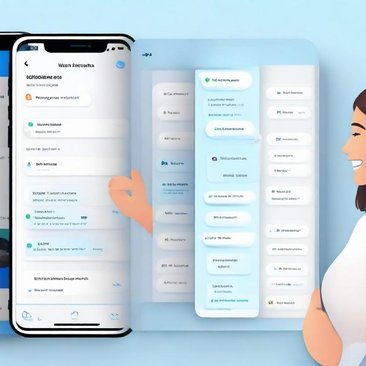Technology Goals
GraphQL is an open-source query language for APIs and a runtime for executing those queries. Developed by Facebook, GraphQL provides a more flexible and efficient alternative to traditional REST APIs by allowing clients to specify exactly which data they need, preventing over-fetching or under-fetching of information. Unlike REST, which returns a fixed set of data for each endpoint, GraphQL enables developers to define queries that retrieve only the necessary fields, providing fine-grained control over data fetching.
At its core, GraphQL operates on a schema-based approach. The schema defines the structure of the API, including types, queries, mutations, and subscriptions, which clients use to interact with the API. GraphQL supports both read operations (queries) and write operations (mutations), as well as real-time data updates (subscriptions).
In our projects, GraphQL is used to provide flexible and efficient APIs that enable clients to interact with backend services more effectively. Whether used in web applications, mobile apps, or microservices architectures, GraphQL simplifies data retrieval and enhances performance by allowing clients to request only the data they need.
Strengths of GraphQL in Our Projects
GraphQL provides several key advantages that make it ideal for modern API development:
- Precise Data Fetching: GraphQL allows clients to request only the data they need, reducing the amount of unnecessary data transferred over the network. This leads to more efficient data retrieval, especially in scenarios where APIs have complex relationships between data entities.
- Flexible Querying: GraphQL provides a flexible query language that allows clients to request related data in a single query. This eliminates the need for multiple API calls to fetch related data, as is often required in REST-based systems.
- Strong Typing with Schema: The GraphQL schema defines the structure of the API, including the types and relationships between data entities. This strongly-typed approach ensures that both the server and client understand the exact shape of the data, reducing errors and improving consistency across the API.
- Real-time Data with Subscriptions: GraphQL supports real-time data updates via subscriptions, allowing clients to receive live updates when certain events occur on the server. This is particularly useful in applications that require real-time features, such as chat apps, live dashboards, or collaborative platforms.
- Single Endpoint: Unlike REST APIs, which require multiple endpoints for different resources, GraphQL operates through a single endpoint. This simplifies API design and reduces the complexity of managing numerous routes.
Comparison with REST APIs
While REST APIs return fixed responses for each endpoint, GraphQL allows clients to customize their queries to request specific fields. This flexibility reduces the need for multiple round trips to the server, which is common in REST when fetching related data. In REST, over-fetching occurs when clients receive more data than necessary, while under-fetching requires clients to make additional requests to gather the missing data. GraphQL solves both issues by allowing clients to specify exactly what they need in one query.
Another significant difference is the use of versioning. In REST, API versioning is common when updating or deprecating endpoints, which can lead to multiple versions of the same API being maintained. In GraphQL, the schema evolves over time without requiring versioning. New fields can be added to the schema, and deprecated fields remain available until they are phased out, providing more seamless upgrades.
Real-world Applications in Client Projects
- E-commerce Platform: In an e-commerce platform, GraphQL was used to provide flexible APIs for the frontend, allowing users to query product data, categories, and reviews with a single query. The use of GraphQL reduced the number of requests made by the frontend and improved the performance of the application.
- Mobile Application Development: For a mobile app, GraphQL was implemented to streamline data fetching for different device screens. With GraphQL, the mobile client could retrieve only the necessary data for each view, minimizing data transfer and improving load times for users with limited bandwidth.
- Real-time Collaboration Tool: In a collaborative platform, GraphQL subscriptions were used to enable real-time updates across users working on shared documents. The subscriptions allowed clients to receive live updates when changes were made, ensuring that all users saw the same data in real time.
Client Benefits and Feedback
Clients using GraphQL have experienced faster and more efficient API interactions, leading to improved performance and user experience. One client in the e-commerce industry reported reduced API call times and faster data loading on the frontend, which led to better user engagement and higher conversion rates. In mobile development, the reduced data payloads and customizable queries resulted in better performance, especially for users on slower networks.
The flexibility provided by GraphQL’s single endpoint architecture also simplified API management, reducing the overhead associated with maintaining multiple endpoints in REST-based systems.
Conclusion
GraphQL provides a powerful and flexible alternative to traditional REST APIs by allowing clients to query data more precisely and efficiently. Its ability to fetch only the necessary data, handle complex relationships between entities, and support real-time updates makes it ideal for modern applications that require high performance and flexibility. Whether used in e-commerce, mobile apps, or real-time systems, GraphQL delivers a more efficient, scalable, and developer-friendly approach to API design and data management.

